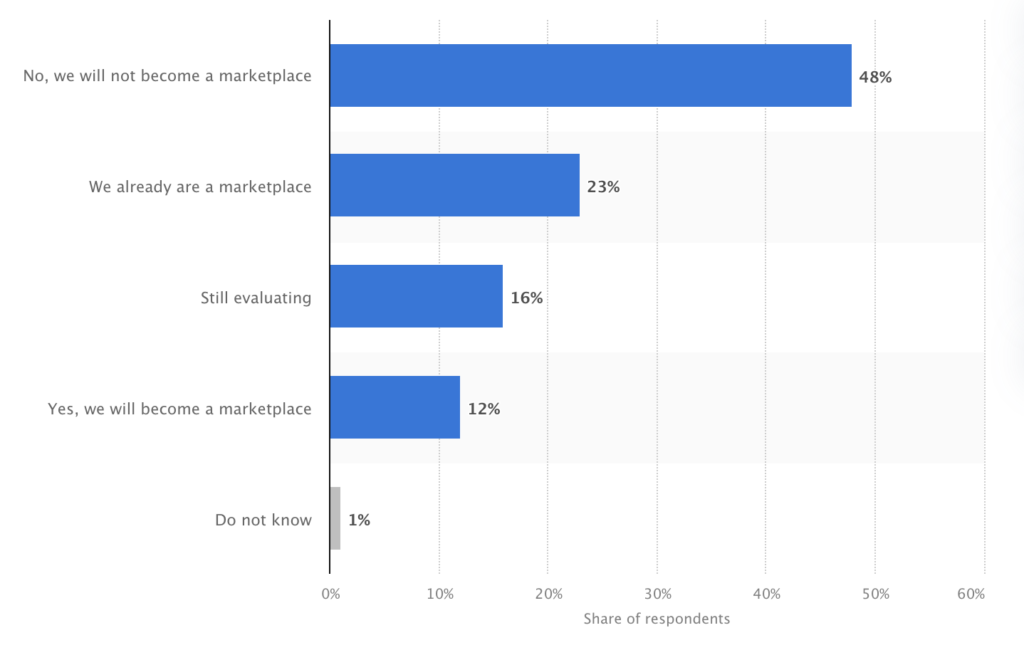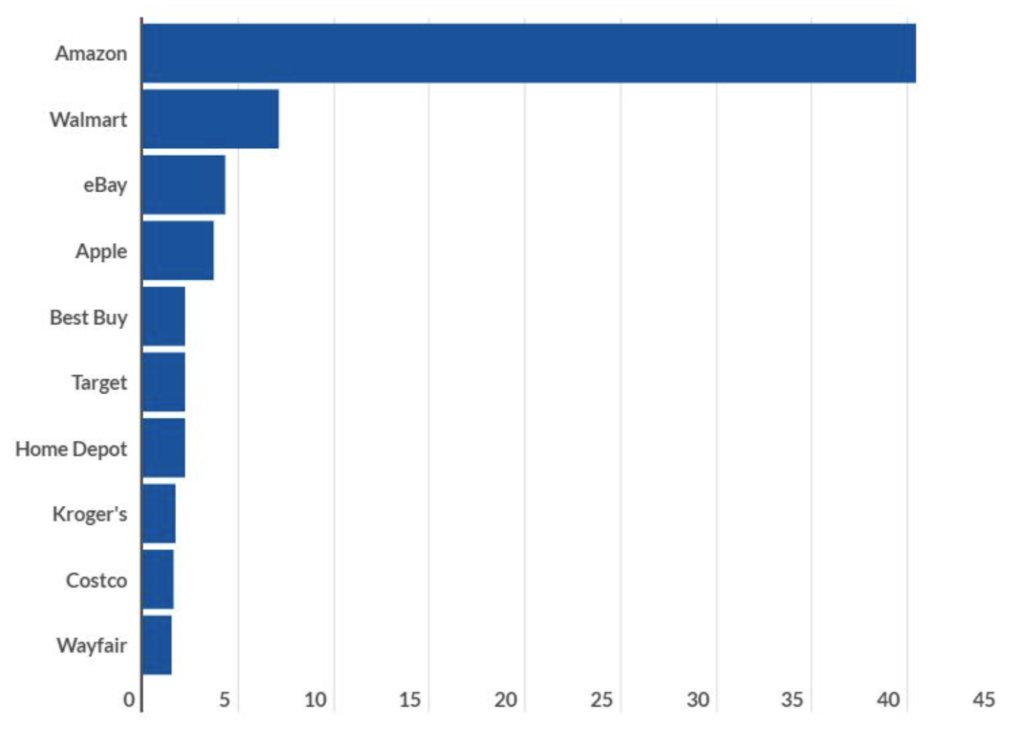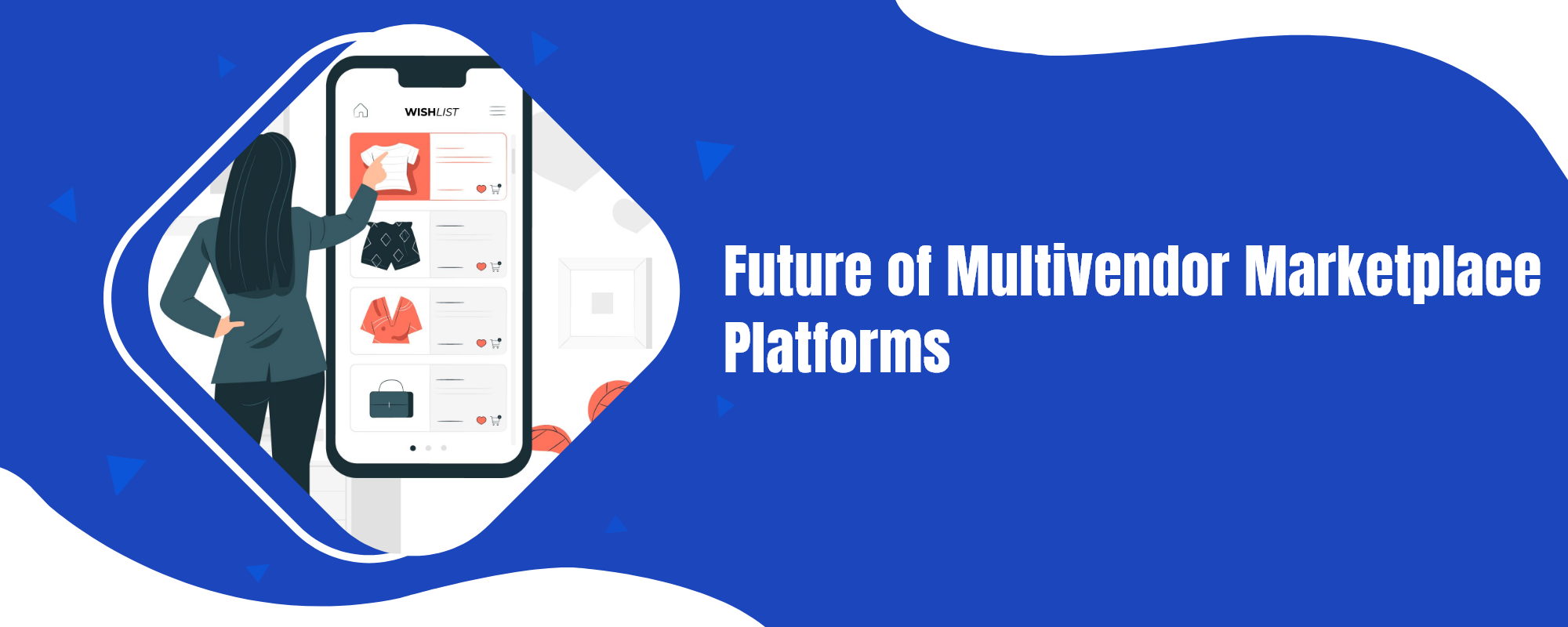The future of multivendor marketplace platforms look bright as their popularity keeps rising over time.
During the pandemic people adopted online shopping as they had to remain indoors. But, even after Covid-19 dipped in intensity, we aren’t ready to give up this convenience. Now when someone says ‘shop’, what they mean is to sit comfortably on a couch and order all they need on a smartphone.
A multivendor online marketplace is a software solution that enables sellers to list and sell their products or services online. The future of multivendor marketplace is bright due to its unlimited potential. The biggest coup ’de grace being, it helps merchants enhance their online visibility and increase sales.
Multivendor marketplace platforms have made their presence felt at the right time, as it makes shopping convenient, quick and hassle-free. When you consider the growth of these platforms, they are expanding and their future is assured as of now. Multivendor marketplace platforms allow brands to promote and sell their products without worrying about back-end logistics.
Brands choosing the top multivendor e-commerce platforms can easily attract their target audience, expand their reach, and enhance revenue.
Future of Multivendor Marketplace Platforms
Globalisation and localisation help you reach a wider audience and improve visibility.

In localisation, content is required that meets the locale’s acceptable cultural norms whence they talk directly to the target audience. For example,
- Numbers, date, and time formats
- Types of currency used
Globalisation is the process of making a product or content multilingual because of emerging markets and customer segments. Globalisation should process anything that is a barrier to global development.
For example, an international standard website will contain features that comprise making date-time formatting simpler to change. It will assist localised calendars, number formats, and the likes that may not be enabled initially.
Moreover, shopping trends continue to evolve. Online marketplaces have especially undergone drastic changes and growth in the last two years. Revenue in the e-commerce market is expected to reach $4.11 trillion this year. This could lead to an annual growth rate of 11.51%.
Few E-commerce Trends Have Impressive Roles
Some potential trends and developments that could shape the future of multivendor marketplace platforms are:
1. Virtual Reality and Augmented Reality (VR/AR) increase tangibility in online shopping
Virtual Reality helps customers to virtually try out items before purchasing them, so as to make informed purchase decisions. AR changes the shopping experience in particular industries, such as fashion and home decor.
This is made possible so that consumers can clearly visualise what they plan to buy in familiar surrounding without seeing it physically.
2. Artificial Intelligence (AI) helps businesses to fathom shoppers
AI helps customers to have an automated, personalised shopping experience. AI religiously collects data on how a customer shops. AI looks for answers to – when a customer purchases goods/items, what is it they’re looking for in a product or a service.
Multivendor marketplaces will increasingly use artificial intelligence and automation to streamline processes and improve efficiency. This could include automating order fulfilment, using AI to improve product recommendations, or using chatbots to provide customer support.

3. Big data and analytics help in personalisation
Customers are segmented on the basis of their interests, habits, and other personal preferences. By using customer data, brands offer personalisation to create unique experiences and build customer loyalty.
Sufficient data and analytics give customers customised experiences depending on their interests, preferences, and requirements.
4. Chatbots enhance user experience while shopping
Like store associates, chatbots interact with online shoppers to ensure customers have an enjoyable shopping experience. Online shoppers want their online purchases to be simple, hassle-free and complete in just a few clicks.
However, if it consumes more time then there is a possibility that the shopper might switch over to some other platform. That’s when the chatbot can step in and save the sale.
5. More payment modes
By offering a variety of payment options, the conversion rate can be increased on mobile devices. Also, customers can save their payment information on such sites. This helps them to check out even faster when they revisit to buy something.
6. Headless and API-driven e-commerce enabling continuous platform innovation
Many e-commerce businesses are embracing headless commerce. It is because of its flexibility on the backend, plus the added SEO, content marketing, and digital experience capacity that help enhance sales.
Multivendor marketplaces are likely to become more personalised, with platforms offering tailored experiences based on user behaviour and preferences. This could include personalised recommendations, customised search results, and targeted promotions.
7. Optimise digital strategy for conversion
These days businesses are on the lookout to improve their conversion rates by optimising their product pages. Multi-channel selling is also another way to get conversions, either through Facebook advertising or shopping ads on Google. Try to understand the ins and outs of Performance Ad Creative that drives conversions.
There’s a continuous growth of niche marketplaces. Multivendor marketplaces catering to specific niches, such as handmade goods or eco-friendly products, are likely to continue to grow in popularity. These marketplaces offer consumers a more curated selection of products, and allow vendors to reach a better targeted audience.
8. B2B is evolving and growing
B2B is still a part of every changing trend. Businesses have realised and are seeing value in servicing customers online. Tasks are being automated.
Hence, teams are focusing more on engaging with customers, providing them with the best customer experience, and establishing ongoing client relationships. They are focusing less on processing order entries.

9. Subscriptions are bringing back customers
Subscriptions offer convenience and benefits that are attractive to consumers. Also, subscription services are a way to plan for inventory and sales that are already locked in.
10. Blockchain technology
Blockchain-based multivendor marketplace helps to build a platform where multiple vendors can sell their products or services directly to consumers, this is among the future of multivendor marketplace platforms.
Future Of Multivendor Marketplace Platforms Will Depend On
- Payment systems and security
Consumers look for an online marketplace that safeguards user-level information, makes use of two-factor authentication, and provides secured payment gateways. Users look out for a multivendor platform that offers a variety of payment gateways, as well as reliable checkout options.
This feature is also among the future of multivendor marketplace platforms.
- Scalability
The best platform is one that helps you to expand and beat the competition by developing in-person features and continuous upgrades.
As more and more consumers shop via their mobile devices, multivendor marketplaces are likely to focus on optimising their mobile experiences. This could involve developing mobile apps or optimising mobile websites for better usability and navigation.
- Logistics and supply chain management
Logistics and supply chain management have their roles cut out in the multivendor marketplace scenario. Streamlining the process is imperative as it ensures that clients are then satisfied with your service.
Logistics plans, executes and manages the storage of goods, and services. It is done between the point of origin and the point of consumption to meet customer needs.
- User Interface
Browsing an e-commerce platform should be easy for both you and your consumers. Users would avoid continuing with a purchase if the interface looks complex and is confusing. Also, you would want to control your business from an intuitive dashboard. Schedule a free demo or start a free trial for hands-on experience.
Reduction in costs is usually through platform consolidation and mergers. Thus saving on maintenance costs, or replacing aging servers to fully use all operational servers and increase efficiency.

- Sustainability and social responsibility
Consumers are ready to pay more for sustainability. The company also has the ultimate social responsibility for any outsourced business operations as well as the final product. This needs controlling the entire product life cycle, including vendors who could be spread over a large area.
Moreover, it takes cooperation, collaboration, and visibility to meet corporate social responsibility goals around the globe.
Conclusion: Future Of Multivendor Marketplace Platforms
Gone are the days when people physically visited markets and malls to purchase essentials. In today’s era, time is money and everyone seems not to have enough of it. So, wasting time on nitty-gritty routines need to be curtailed. Digital transformation has reduced the time to market products and services resulting in a faster and more effective product lifecycle.
Overall, the future of multivendor marketplace platforms look promising, as consumers continue to seek out convenient, diverse, and personalised shopping experiences.
These days we are observing an emerging marketplace of a different nature altogether. The already-developed e-commerce businesses are looking to add marketplace capabilities to their present business models so that they could turn into fully functional digital channels.
However, they are still on the lookout for means to provide their customers with a more complete and versatile experience. Companies like Appscrip help entrepreneurs with futuristic multivendor platforms. Get in touch to know more.
After an Engineering degree and a Diploma in Management I devoted 16+ years working in the automotive industry. My innate skill and extreme passion in writing, encouraged me to adopt it up as a profession. I have been writing for more than 10+ years in the software industry. The 400+ blogs I published are informative, exhaustive and interesting to a professional and causal reader.










